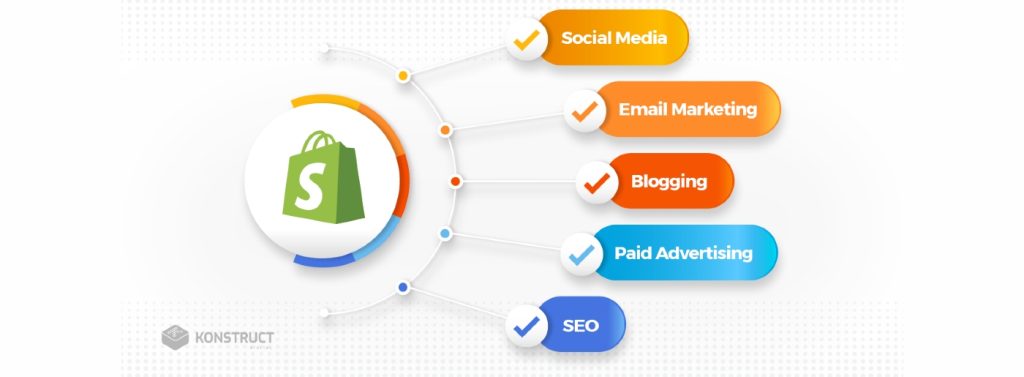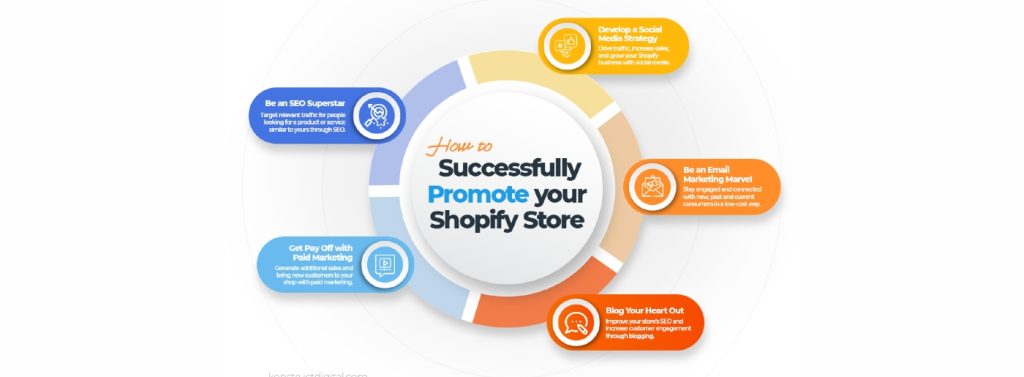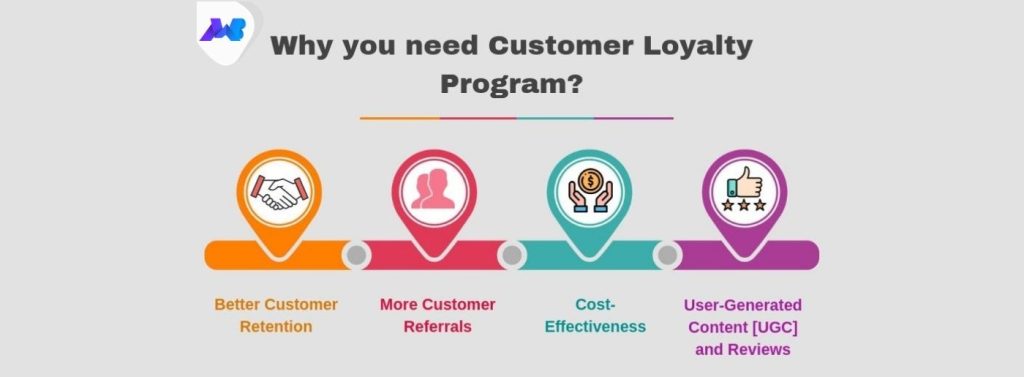Maximizing Shopify: Tips, Tricks, and Hacks for E-commerce Marketers
Shopify is like an online store builder that helps people sell things on the Internet. It is essential for people who sell things online to sell as much as possible because that is how they make money. But, sometimes, these sales fall short, and e-commerce marketers can be confused about what to do next. But don’t panic. In this guide, we’ll share some helpful Shopify tips and tricks to help them — sell more stuff and make more money. So, if you want to know how to optimize your online store, keep reading. But first, let’s learn a little about Shopify.
What Is Shopify?

Shopify is like a tool that helps you build your online store. People use Shopify to sell all kinds of things, like clothes, gadgets, or handmade crafts. It’s a simple platform because it takes care of most of the technical stuff, so you can focus on your products and customers.
With Shopify, you can customize your store, add products, and even process payments without being tech—savvy. It’s a practical solution for anyone who wants to sell online without the headache of building a website from scratch.
Why Choose Shopify for Your E-Commerce Business?
If you’re considering starting an online store, Shopify is a great choice. Here are some clear reasons why:
- User-Friendly: Shopify is easy to use, even if you’re not a tech expert. You can set up your store without getting tangled in complicated code.
- Beautiful Templates: They offer a bunch of professional-looking templates for your store. You can pick one that matches your brand style.
- Secure: Security is crucial for e-commerce. Shopify takes care of security for your store so that your customers’ information stays safe.
- Scalability: Whether you’re just starting or you’re a big business, Shopify can grow with you. You can add more products and features as your business expands.
- Marketing Tools: Shopify provides tools to help you market your store. You can optimize your site for search engines, run email campaigns, and more.
- App Store: Shopify has an app store with many add-ons and plugins to enhance your store’s functionality.
- Analytics: You can see how your store is performing with embedded analytics. It helps you make informed decisions.
- Global Reach: Shopify supports multiple languages and currencies, so you can reach customers worldwide.
Now, let’s find Shopify tips and tricks to maximize Shopify for e-commerce success.
9 Simple Shopify Tips to Boost Your Sales

1. SEO-Driven Content and Store Optimization
One of the key ways to boost your Shopify sales is by focusing on SEO-driven content and optimizing your store for search engines. This means using words and phrases that people might type into search engines when looking for products like yours. By incorporating these keywords naturally into your product descriptions, titles, and website content, you make it easier for potential customers to find your store.
Tessa Benson, Founder of Thoughtful Gift Lab, explains, “Optimizing your store structure and navigation is vital. Ensure your website is well-organized — making it simple for visitors to find what they’re looking for. This not only enhances the user experience but also helps search engines understand your site better.”
To get started with SEO-driven content and store optimization:
- Research relevant keywords: Identify the keywords your target audience is using.
- Integrate keywords naturally: Incorporate these keywords into your product descriptions and content.
- Optimize images: Use descriptive file names and alt text for images.
- Focus on page speed: Faster-loading pages rank better in search results.
- Create a sitemap: Make it easier for search engines to crawl and index your site.
- Regularly update content: Fresh, relevant content can improve your search rankings.
2. Create Email Marketing Campaign
Email marketing is an effective strategy to boost your Shopify sales and engage with your customers. It allows you to communicate directly with your audience, keeping them informed about your products and promotions, adds Mark Valderrama, CEO and founder of Aquarium Store Depot.
Here’s how you can make the most of email marketing:
- Building Your Email List: Start by collecting email addresses from your website visitors and customers. Offer incentives like discounts or exclusive content to encourage sign-ups.
- Product Recommendations: Use data on customer browsing and purchase history to suggest products they might be interested in. Personalized recommendations can drive more sales.
- Exclusive Promotions: Offer special discounts or promotions to your email subscribers. Make them feel like valued members of your community.
- Mobile Optimization: Ensure your emails are mobile-responsive since many people check their emails on mobile devices. A mobile-friendly design enhances the user experience.
- A/B Testing: Experiment with different elements of your email campaigns, such as subject lines, visuals, and content, to determine what resonates best with your audience.
3. Provide a Loyalty Program

Martin Seeley, CEO of Mattress Next Day, recommends, “Implementing a loyalty program can be a game-changer for your Shopify store when it comes to boosting sales. When customers make a purchase, they earn points or rewards.”
Over time, these points accumulate and can be redeemed for discounts, free products, or other perks. Loyalty programs create a sense of exclusivity and appreciation — making customers feel valued, Martin added.
To set up a successful loyalty program:
- Define rewards: Decide what perks or discounts loyal customers will receive.
- Choose a loyalty app: Shopify offers various apps to help you set up and manage your program.
- Promote it: Make sure your customers are aware of the loyalty program through email marketing, social media, and your website.
- Track and analyze: Monitor the program’s performance and make adjustments based on customer behavior.
4. Build a Referral Program
Andrew Priobrazhenskyi, CEO and Director at DiscountReactor, adds, “Creating a referral program for your Shopify store is a powerful strategy to get sales on your Shopify website. A referral program encourages your existing customers to recommend your products or services to their friends and family. It’s like word-of-mouth marketing in the digital age.”
Here’s how to get started with a referral program:
- Define Incentives: Decide what rewards both the referrer and the referred customer will receive. This could be discounts, freebies, or store credit.
- Choose a Referral App: Shopify offers various apps that can help you set up and manage your referral program with ease.
- Promote Your Program: Let your customers know about your referral program through email campaigns, on your website, and via social media.
- Track Referrals: Use analytics to monitor the performance of your referral program, including who’s referring and who’s signing up.
5. Utilize Product Reviews for Social Proof
Ritika Asrani, Owner and Broker of Century21 St Maarten Real Estate, adds, “Incorporating product reviews into your Shopify store is a smart move to boost sales. Because potential customers trust the opinions of other buyers, when they see positive reviews and testimonials, it adds credibility to your products and encourages them to make a purchase.”
Here’s how to effectively use product reviews as social proof:
- Enable Reviews: Ensure that product reviews are enabled in your Shopify settings.
- Encourage Reviews: Reach out to past customers and ask them to leave reviews. You can also automate this process with review request emails.
- Display Ratings: Showcase product ratings prominently on your product pages. High ratings catch the eye and build trust.
- Include Customer Photos: If possible, allow customers to upload photos with their reviews. Visual proof of satisfied customers can be very persuasive.
- Respond to Reviews: Engage with customers by responding to their reviews. This shows that you value their feedback.
- Use Review Apps: Consider using Shopify apps designed for collecting and displaying reviews. These often come with additional features to enhance social proof.
6. Implement Push Notifications
Sumeer Kaur, Founder of Lashkaraa.com adds, “To boost sales on your Shopify store, consider implementing push notifications. These are short messages that pop up on a user’s device, like a phone or computer, even when they’re not on your website. Push notifications can be a powerful tool to re-engage customers, announce promotions, and encourage repeat visits.”
Here’s how to get started with push notifications:
- Choose a Push Notification Service: Select a reliable push notification service provider that integrates seamlessly with Shopify, such as PushOwl or Firepush.
- Segment Your Audience: Divide your subscribers into segments based on their interests or behavior. This allows you to send targeted notifications.
- Craft Compelling Messages: Write clear and enticing messages that prompt action. For example, you can notify subscribers of limited-time discounts or new product arrivals.
- Measure and Optimize: Use analytics to track the performance of your push notifications. Adjust your strategy based on what works best for your audience.
7. Be Active on Various Social Media Platforms 
Gerrid Smith, CMO of Joy Organics, adds, “When we’re talking about Shopify tips to boost sales, not mentioning social media wouldn’t be fair. Expanding your presence across multiple social media platforms is a strategic move to enhance your Shopify store’s visibility and drive more sales. Social media offers access to a vast audience and provides numerous opportunities to engage with potential customers.”
Here’s how to make the most of it:
- Choose the Right Platforms: Start by identifying the social media platforms that align best with your target audience. Think about popular options like Facebook, Instagram, Twitter, Pinterest, and LinkedIn.
- Keep Posting Regularly: To maintain an active presence, make sure to post regularly. Share updates about your products, promote special offers, share industry insights, and create engaging content to keep your audience interested.
- Engage with Your Followers: Actively respond to comments, messages, and feedback. Engaging with your audience fosters a sense of community and trust — making customers more likely to buy from you.
- Use Visual Content: Visuals like images and videos work exceptionally well on social media. They can effectively showcase your products and capture your audience’s attention.
- Consider Paid Advertising: Explore the option of using paid social media advertising to reach a broader audience and drive traffic directly to your Shopify store.
- Analyze and Adapt: Take advantage of analytics tools provided by social media platforms to track your performance. Analyze what’s working and adjust your strategy accordingly to improve your results.
8. Set the Right Pricing Strategy
Khashayar Shahnazari, Chief Executive Officer at FinlyWealth, adds, “When it comes to maximizing your Shopify store’s sales, getting your pricing strategy right is crucial. Your pricing not only affects your profit margins but also impacts how customers perceive the value of your products.”
Here’s how to go about it:
- Competitive Analysis: Begin by researching your competitors and understanding how they price similar products. This gives you insights into the market landscape.
- Cost Considerations: Calculate your production and operational costs to ensure you cover expenses while remaining competitive.
- Value-Based Pricing: Determine the perceived value of your products to your target audience and price accordingly.
- Dynamic Pricing: Consider using dynamic pricing strategies that adjust based on factors like demand, seasonality, or customer behavior.
- Promotions and Discounts: Strategically use promotions, discounts, and bundling to entice customers while maintaining healthy profit margins.
- Regular Review: Pricing isn’t static. Regularly review and adjust your prices based on market changes and customer feedback to stay competitive and maximize sales.
9. Pick the Perfect Shopify Template
Selecting the appropriate Shopify template is a critical decision when it comes to improving sales on your online store. Your template not only affects the overall look and feel of your site but also plays a role in user experience and conversion rates.
Here’s what you should consider:
- Reflect Your Brand: Choose a template that aligns with your brand’s aesthetics and values. This helps in creating a consistent and appealing online presence.
- Mobile Responsiveness: Ensure the template is mobile-friendly, as a significant portion of users shop via smartphones and tablets.
- User-Friendly Navigation: Opt for templates with intuitive navigation menus and a clear structure, making it easy for visitors to find what they’re looking for.
- Loading Speed: Templates that load quickly contribute to a better user experience and can positively impact your search engine rankings.
Conclusion
Shopify is an invaluable e-commerce platform that empowers businesses to create and manage their online stores efficiently. It offers a user-friendly interface, versatile templates, and robust features — making it accessible to both beginners and experienced e-commerce professionals. E-commerce marketers can follow some simple Shopify tips and tricks like offering a referral and loyalty program, implementing the right pricing strategies, or providing social proof with reviews to boost their sales.
And if you’re asking which is my favorite tip among all these, I would go for SEO-Driven Content and Store Optimization because SEO is a top priority.





Leave a Reply